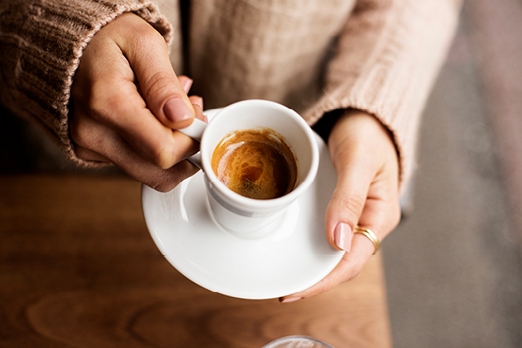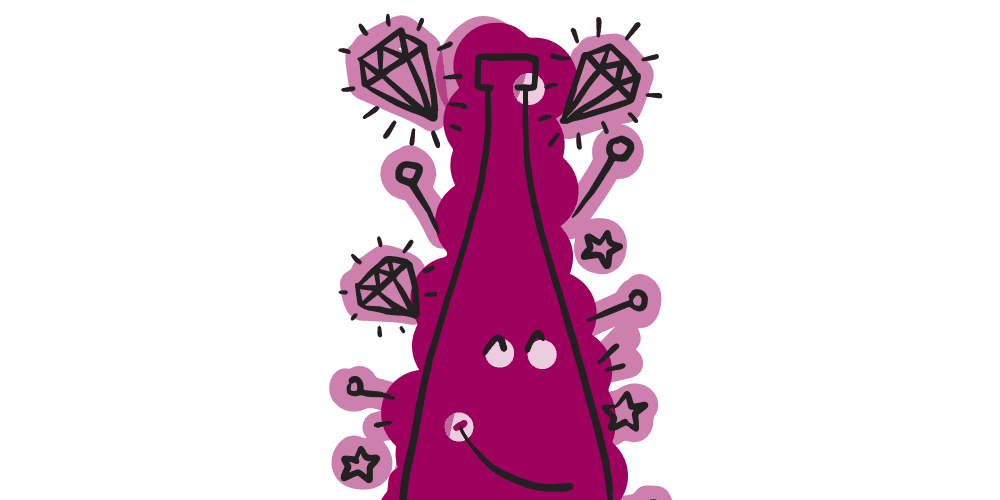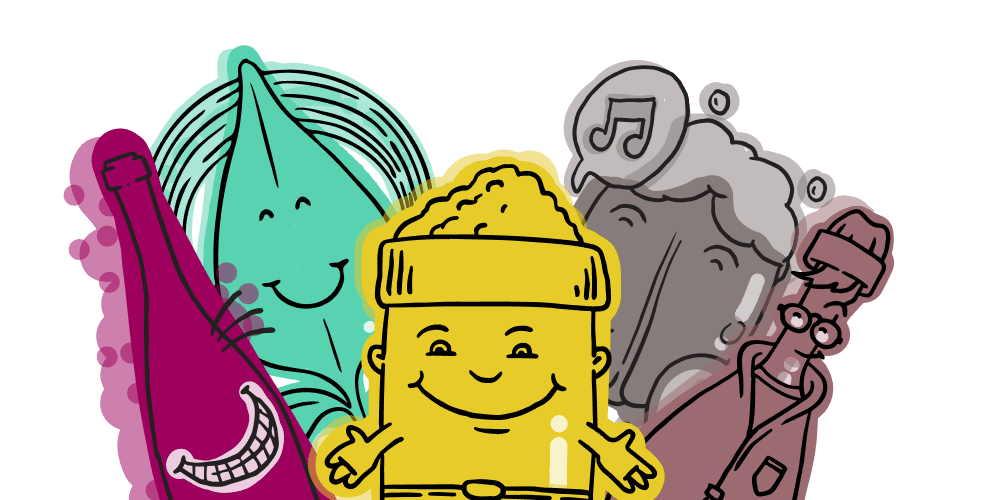The strongest coffee in the world
Ask (almost) any Italian how he likes his coffee and he’ll tell you “strong”. But what does strong mean? And which is the strongest coffee in the world?

Ask (almost) any Italian how he likes his coffee and he’ll tell you “strong”. But what does strong mean? And which is the strongest coffee in the world?
“A coffee please, Mario, and make sure it’s strong!” Or: “I know which coffee is best, the strong kind,” which is a real punch to the gut for any true coffee expert. The same consumer or “expert” that we just mentioned, will quickly answer, “The one that wakes me up, intense, with lots of caffeine.” But is this really true? Can we actually taste caffeine? Does a high caffeine content really make a coffee more “intense”?
Okay, no more quotation marks.
WHAT DOES A CLIENT CONSIDER TO BE A STRONG COFFEE?
When a client asks the barman (or the home coffee machine) for a strong coffee, what is he asking for? In technical tastings, the word “strong” doesn’t exist. They might talk about aromatic intensity, pungent or syrupy body, or persistent creaminess, but no professional taster would ever call a coffee “strong”. So what is the average client referring to?
In general, he’s referring to two sensations: the body and the bitterness. Now, it’s not that consumers love bitterness, but they associate it, as though it were a medicine, with something that gives them a boost or a charge, with that bitterness then getting balanced out with three spoonfuls of sugar.
All roasting experts know that there’s nothing difficult about making an intense and bitter coffee. You take some Robusta coffee (which costs less than Arabica and has more body, but with aromas that are decidedly less gratifying) and you dark roast it. The dilation between the cells which happens during the roasting process allows the water, during extraction, to wash away many substances, making the cup of coffee fuller bodied. A dark roast is also more bitter; a sort of collateral effect. But if we take a decaffeinated Robusta and dark roast it, no consumer will know the difference…
THE STRENGTH OF COFFEE AS A TECHNICAL TERM
Technically speaking, the strength of a cup of coffee can be thought of according to the definition that the SCA (Specialty Coffee Association) gives it in their programs. Here they talk about TDS (total dissolved solids) or rather, the percentage of dissolved solids present in the beverage. Obviously, if the percentage of coffee dissolved in the cup is greater, the coffee will be “stronger”. Meanwhile, with a lower percentage of TDS, the coffee will be “weaker”.
Technically speaking, the strength of a cup of coffee is measured not only according to the taste but also, and above all, with a tool called a refractometer, used for measuring the index of refraction of a sample of the beverage which is positioned above the tool. Obviously, however, the dissolved solids in the beverage include more than just caffeine: which means that even a decaffeinated coffee could have a high TDS due to melanoidin, acids, fats, proteins, and cellulose.

WHEN CAFFEINE MAKES COFFEE STRONG
So if we don’t use TDS as a reference, and we understand that consumers can be deceived by body and bitterness, then we must turn to science to figure out which coffee offers the highest caffeine content in the cup. Meanwhile, we’ve seen that Robusta generally has more caffeine, on average twice that of Arabica, and that if the bean is dark roasted it’s easier for water to remove the substances, even the caffeine. But is there a Robusta that’s stronger than the rest? Yes, in Indonesia, especially on the island of Java, there are some varieties of Robusta with a caffeine content of approximately 4.5%. So if it takes 7 grams of coffee to make an espresso, then the amount of caffeine in the cup is theoretically 0.315 mg (not all of it gets extracted) as compared to 0.120 mg in a normal Arabica.
Therefore Java’s coffee is the most “caffeinated” among the pure coffees.
What does “among the pure coffees” mean? In stores we find blends of coffee that are advertised as having a much higher caffeine content, even up to more than one gram of caffeine per cup. There are a few things to say about these coffees.
First of all, how these evaluations are conducted. Every expert barman knows that the parameters of extraction can vary enormously. And it also seems very strange that a cup of coffee can contain 20% caffeine… that’s really a huge amount. And as easy as caffeine is easy to take out (decaffeinated), it’s just as easy to add.
In the end, are we really sure that we want to drink a cup of terrible and extremely bitter coffee and not just two cups of good coffee?
Ready to join the Vinhood family?
Vinhood is the First Italian Taste Agency. We explore the world of taste to guide people about how to choose and consume products and supporting companies in nurturing personalized relationships with their customers.
Read more
- What is the coffe cupping procedure, according to the SCA protocol?
 Its method and execution may seem peculiar, involving crusts of coffee and large cups of hot water, yet cupping is a method that’s used worldwide to evaluate the quality, potential defects, and market prices of batches of coffee in both production and consumption countries.
Its method and execution may seem peculiar, involving crusts of coffee and large cups of hot water, yet cupping is a method that’s used worldwide to evaluate the quality, potential defects, and market prices of batches of coffee in both production and consumption countries. - The secrets to properly pressing coffee
 Few know that properly pressing coffee is a fundamental step in its overall preparation. But what’s the right way to do it?
Few know that properly pressing coffee is a fundamental step in its overall preparation. But what’s the right way to do it? - Coffee roasting - Nordic style on the spotlight
 Continuing with our roasting series. This time we focus on the Scandinavian approach to coffee: why do they roast their coffee’s light, and how does it affect different parts of the coffee chain?
Continuing with our roasting series. This time we focus on the Scandinavian approach to coffee: why do they roast their coffee’s light, and how does it affect different parts of the coffee chain?

